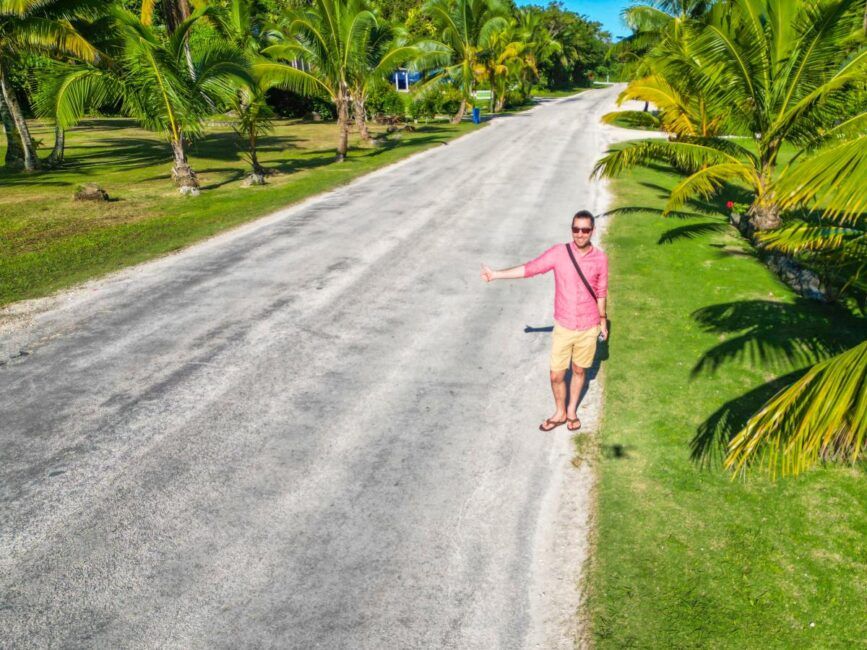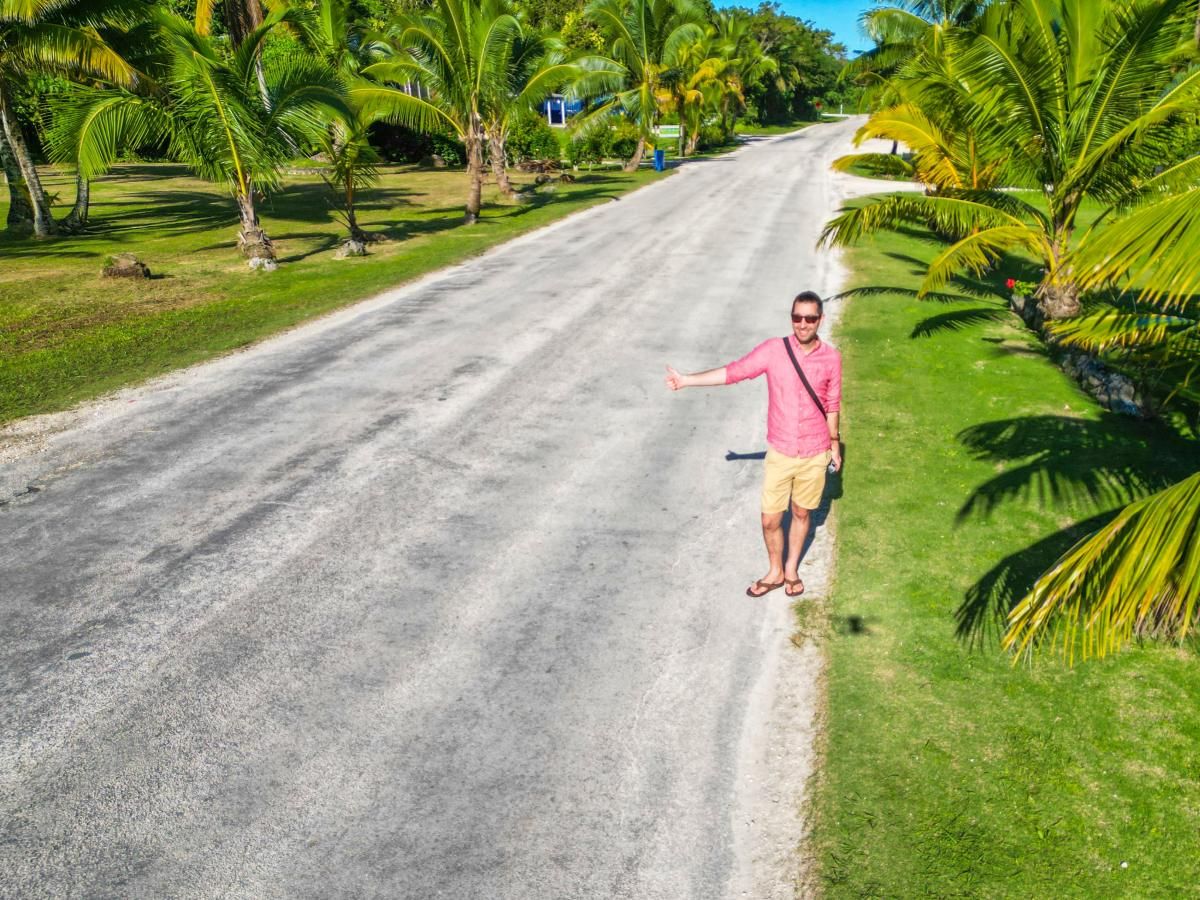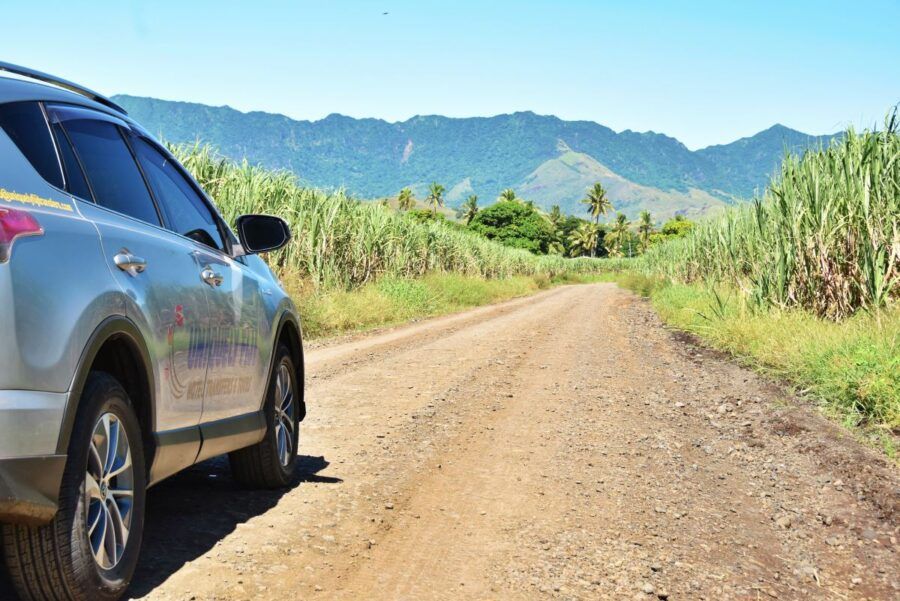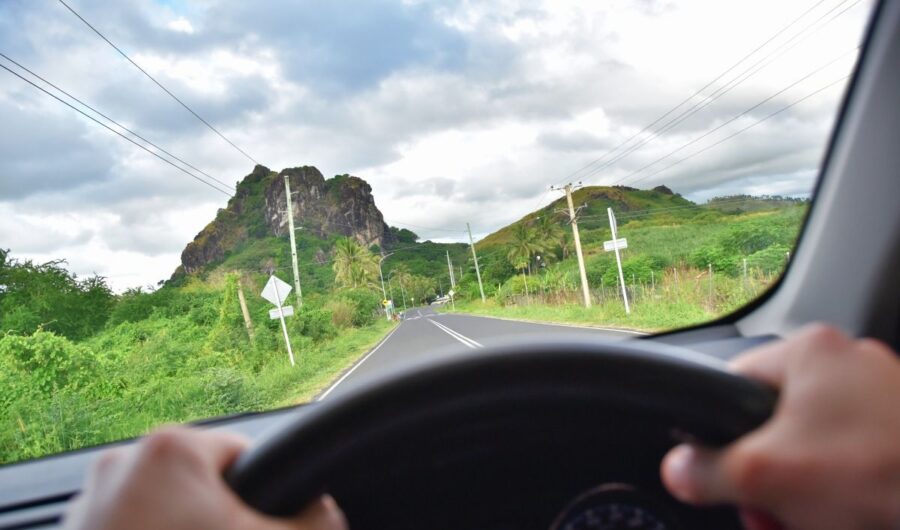Is it Safe to Hitchhike in Fiji?
Hitchhiking is a fun and popular way for backpackers to travel a country. Getting around somewhere for free and meeting interesting locals? Why not?! Well, like anywhere in the world, hitchhiking in Fiji has a small but potentially serious risk. What’s more, hitchhiking as we know it is not particularly common in Fiji. Instead, if you stick your thumb out on the side of the road, chances are, you’ll be picked up by one of Fiji’s “carrier vans”, where it is customary to pay around the same as a bus fare to the driver. Learn more about hitchhiking in Fiji in the guide below.
Table of Contents
Do People Hitchhike in Fiji?
Hitchhiking, i.e. getting picked up by a member of the public, is not extremely common in Fiji. Instead, you’re more likely to be picked up by a carrier van. Carrier vans are open-backed pick-up trucks, usually with a tarpaulin cover over the back and wooden benches running along each side. It is customary to pay the driver the price of the relevant bus fare. This is by no means expensive when you consider bus fares being FJ$1 within towns and around FJ$22-$28 to go from Nadi all the way across the island to Suva. And yes, plenty of carrier vans are going between Nadi and Suva along the Queens Road each day. So, while traditional hitchhiking might not be the norm, you’ll find that Fiji’s unique carrier van system offers an affordable and authentic way to experience local transportation and culture.
Learn more about carrier vans in our guide to Minivans & Carrier Vans in Fiji, as well as The Guide to Commuting in Fiji.
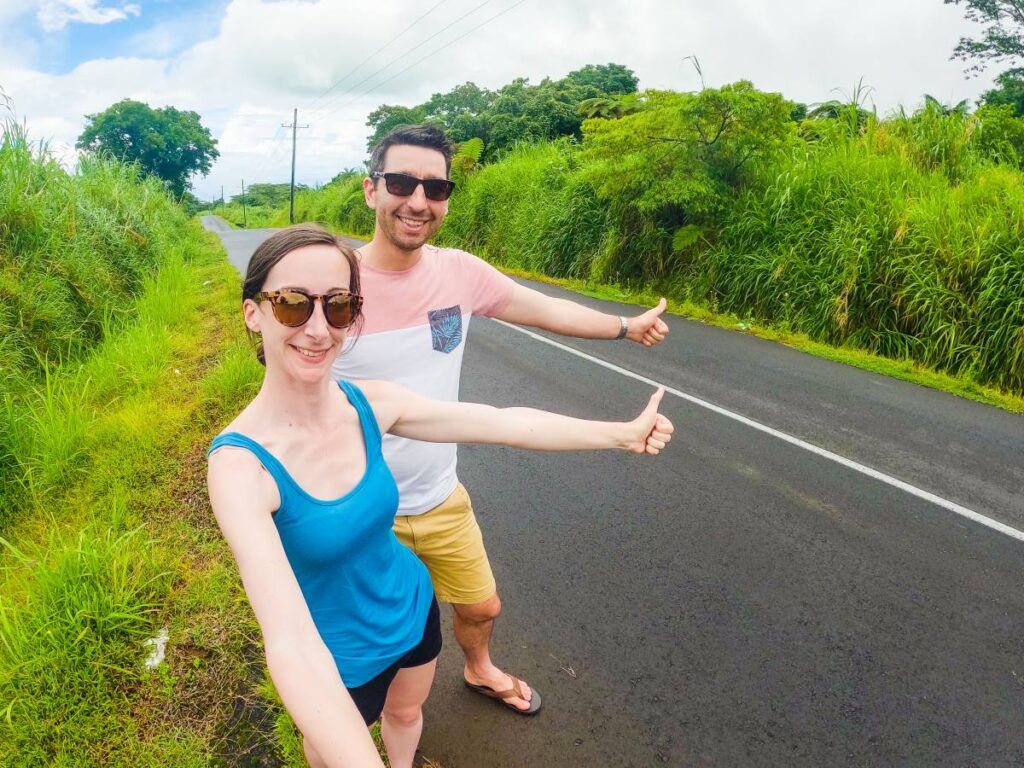 © FijiPocketGuide.com
© FijiPocketGuide.comThe Pros and Cons of Hitching in Fiji
Like all ways of getting around, there are pros and cons of hitchhiking in Fiji.
The Pros of Hitchhiking
- It’s free (or you can offer to contribute a small amount for gas)
- You will likely meet some interesting people
- It could be faster or just as fast as getting the bus
- It’s more eco-friendly than using a vehicle all to yourself
- It’s an adventure!
The Cons of Hitchhiking
- It can be time-consuming trying to get a lift
- There is an element of risk
- You are more likely to be picked up by a carrier van and will need to pay the bus fare, so it might make more sense to take the bus
- Hitchhiking is only likely to be successful around Fiji’s towns in Viti Levu, Vanua Levu and Taveuni
- Someone else is in charge – so you can’t spontaneously stop for photos, for example
- You have far less flexibility than having your own rental car.
 © FijiPocketGuide.com
© FijiPocketGuide.comHitchhiking Safety in Fiji
There’s no sugar-coating it: when you’re hitchhiking anywhere in the world, you’re taking a risk as you don’t know who you could end up in a vehicle with. While some people have a positive experience of hitchhiking in Fiji, there have been occasional instances of hitchhikers being mugged in Suva and Nadi. If you are going to do hitchhiking, be sure to be savvy about it by following the following tips…
7 Safety Tips for Hitchhiking in Fiji
- Never hitchhike alone
- Don’t hitchhike at night – taxis are generally available 24/7
- Engage in conversation before getting in the car, allowing time for your instinct to determine whether you should wait for the next car or not
- Don’t accept a lift if you get bad vibes from the driver
- If you start to feel uncomfortable, come up with an excuse to be dropped off immediately. Saying that you’re going to be sick is a good one
- Take a picture of the vehicle registration before you get in (ask first and only get in if they accept) and message it to a trusted contact. Even if you have no network to send the picture, it’s more to show the driver how cautious you’re being
- Have a “Plan B” – if you are unsuccessful at hitchhiking, have an accommodation option or alternative transport. See our guide to Public Transport in Fiji for ideas.
For more about safety in Fiji, check out How to Stay Safe in Fiji.
More About Hitchhiking in Fiji
That’s it from the guide to hitchhiking in Fiji. For alternative ways to get around Fiji, check out the following:
Finally, check out more transport options around the islands in our Fiji Transport Guide: 20 Best Ways to Get Around Fiji.
Sources:
The information in this guide has been compiled from our extensive research, travel and experiences across Fiji and the South Pacific, accumulated over more than a decade of numerous visits to each destination. Additional sources for this guide include the following:
- Land Transport Authority (Road safety advice - Updated [2025])
- Tourism Fiji (General travel advice - Updated [2025])
- Fiji Immigration (Visa and immigration advice - Updated [2025])
- Fiji Revenue & Customs Service (Customs and visitor taxes - Updated [2025])
- Biosecurity Authority of Fiji (Biosecurity advice - Updated [2025])
- Fiji Meteorological Service (Weather forecast and warnings - Updated [2025])
- Fiji Bureau of Statistics (Statistics and travel data - Updated [2025])
- Ministry of Tourism and Civil Aviation (Tourism statistics - Updated [2025])
- SPTO (Pacific tourism advice - Updated [2025])
- Fiji Hotel and Tourism Association (Tourism trade association - Updated [2025])
- Safe Travel (New Zealand travel advisory for Fiji - Updated [2025])
- Smart Traveller (Australia travel advisory for Fiji - Updated [2025])
- Travel.State.Gov (U.S. travel advisory for Fiji - Updated [2025])
Our editorial standards: At Fiji Pocket Guide, we uphold strict editorial standards to ensure accurate and quality content.

About The Author
Laura (Lora) S.
This article was reviewed and published by Laura, editor in chief and co-founder of Fiji Pocket Guide. Since arriving solo in the South Pacific over 10 years ago with nothing but a backpack and a background in journalism, her mission has been to show the world how easy (and awesome) it is to explore a paradise such as Fiji. She knows the islands inside-out and loves sharing tips on how best to experience Fiji’s must-dos and hidden gems. Laura is also editor of several other South Pacific travel guides.
